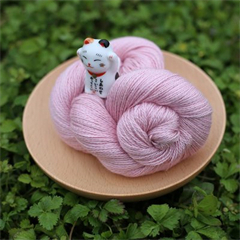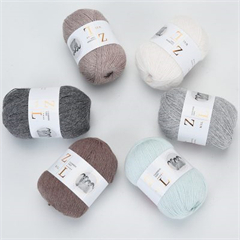Exploring different yarn types and textures is a fun and creative aspect of knitting and crocheting. Yarn comes in a wide variety of materials, textures, and colors, each with its unique qualities and characteristics. Here’s a guide to help you understand and experiment with different yarn types and textures:
1. Yarn Fiber Types:
- Acrylic: Acrylic yarn is synthetic and known for its affordability and durability. It’s available in a wide range of colors and is a great choice for beginners.
- Wool: Wool yarn is natural and comes from sheep. It is warm, elastic, and excellent for cold-weather projects. Merino wool is soft and luxurious.
- Cotton: Cotton yarn is breathable and ideal for warm-weather projects like dishcloths and summer garments. It has a matte finish and a smooth texture.
- Alpaca: Alpaca yarn is incredibly soft and lightweight. It’s warmer than wool and hypoallergenic, making it suitable for sensitive skin.
- Silk: Silk yarn is luxurious and has a beautiful sheen. It’s often blended with other fibers for added strength and drape.
- Bamboo: Bamboo yarn is eco-friendly, soft, and breathable. It has a silky feel and is ideal for drapey, lightweight projects.
- Mohair: Mohair yarn comes from the Angora goat and has a fluffy, fuzzy texture. It’s often used for adding texture to projects.
- Nylon: Nylon yarn is strong and durable. It’s commonly used in sock yarn blends to provide elasticity and longevity.
- Linen: Linen yarn is made from flax and has a crisp, textured finish. It’s perfect for making summer garments.
2. Yarn Textures:
- Smooth: Smooth yarns create even, polished fabric. They are great for showing off intricate stitch patterns.
- Bouclé: Bouclé yarn has loops that create a textured, bumpy surface. It adds interest and depth to your projects.
- Chenille: Chenille yarn is velvety and soft with a plush texture. It’s often used for cozy blankets and stuffed animals.
- Eyelash: Eyelash yarn features short, fuzzy strands that resemble eyelashes. It’s used to add a furry or whimsical texture.
- Ribbon: Ribbon yarn is flat and wide, creating a bold, ribbon-like texture. It’s great for accessories like scarves and belts.
- Tweed: Tweed yarn has small flecks or bits of contrasting color, giving it a rustic, speckled appearance.
- Marled: Marled yarn combines two or more colors twisted together, creating a variegated effect. It adds depth and interest to your projects.
- Gradient: Gradient yarn transitions smoothly from one color to another, allowing you to create ombre or color-shifting effects.
- Slub: Slub yarn has thick and thin sections, creating an irregular texture that adds character to your projects.
3. Blends and Combinations:
- Many yarns are blends of different fibers. For example, a wool/acrylic blend might combine the warmth of wool with the durability of acrylic.
- Exploring blends can give you the best of both worlds, combining the qualities of various fibers to suit your project’s needs.
4. Texture for Design and Pattern:
- Consider the texture of your yarn when choosing a pattern. Some patterns are best suited for smooth yarns, while others shine with textured or novelty yarns.
- Experiment with different stitch patterns and yarn combinations to create unique textures and visual effects in your projects.
As you explore different yarn types and textures, keep in mind that the choice of yarn can significantly impact the final appearance, feel, and functionality of your knitting or crochet projects. Don’t hesitate to experiment and combine different yarns to create one-of-a-kind pieces that showcase your creativity and style.


















